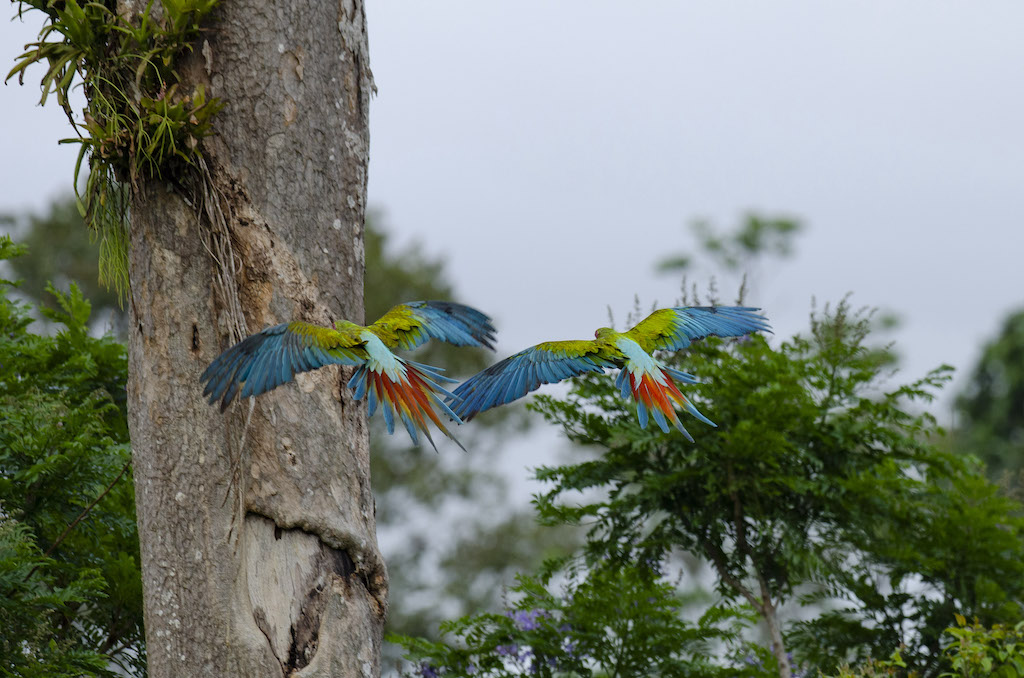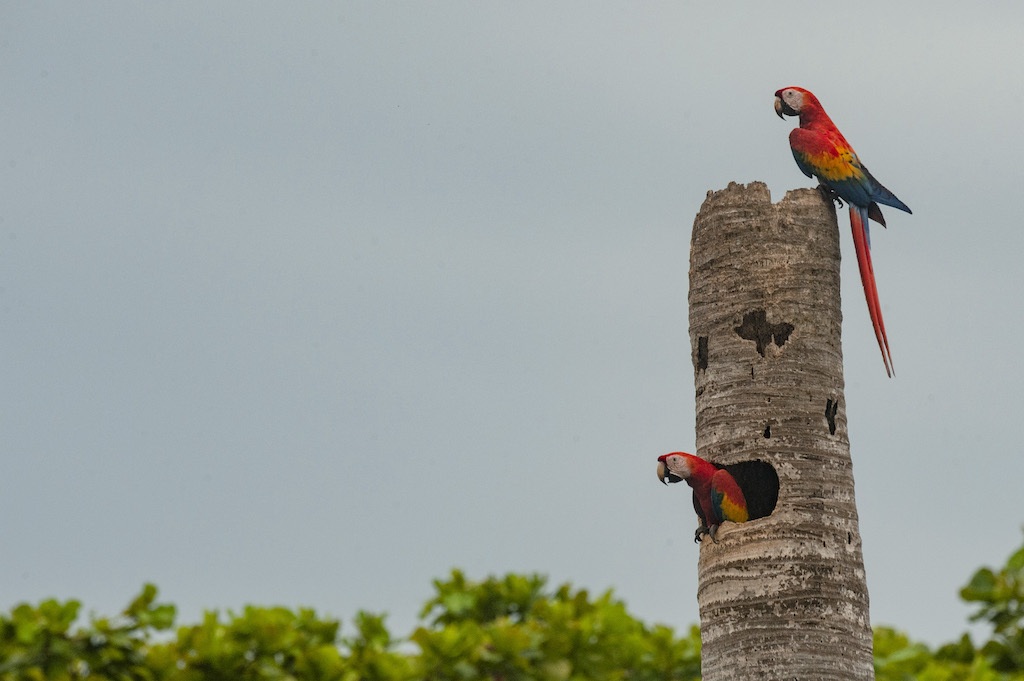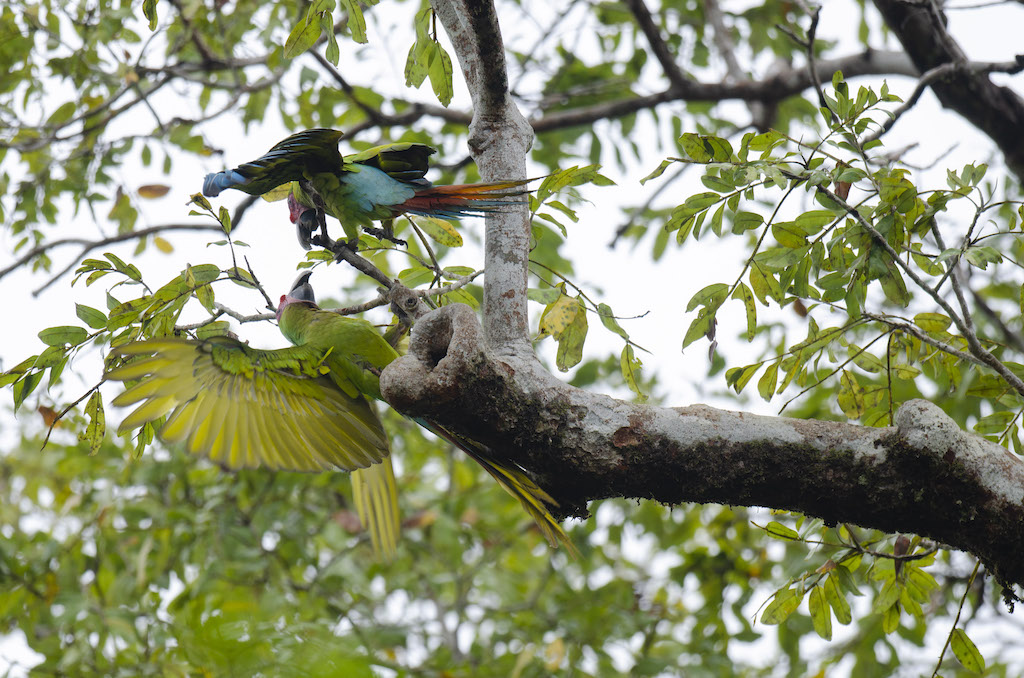
General Information:
Macaws is the common name of about 18 species of the parrot family. Their scientific family name is ‘Psittacidae’ and they are classified in the genera Ara, Anodorhynchus, Cyanopsitta, Primolius, Orthopsittaca, and Diopsittaca. Macaws are recognized for their colorful plumage. These brightly colored long-tailed birds with a size from 11.8 to 39.5 inches, a weight up to 3.75 pounds and an average life span of about 60 years are some of the most spectacular parrots in the world and can be found in the tropical rainforests of Central and South America. Their plumage is perfectly suited to live in this habitat of green canopies, colorful flowers and fruits. The probably best-known New World parrot is the scarlet macaw (Ara macao) with its brilliant red, yellow, and blue plumage contrasts with a bare white face that may blush when the bird is excited. Its powerful beak can easily crack nuts and seeds and their scaly tongue with a bone inside is perfect for tapping into fruits. Moreover, their gripping claws are a helpful tool to latch onto branches and to grab, hold, and examine items. Besides their claws their breaks serve as a third foot as it helps climbing up trees to search for seeds, fruits and leaves. Macaws are intelligent, social birds that often gather in flocks of 10 to 30 individuals, most often seen flying to and from roosting and feeding sites in pairs, family groups, or flocks. Their metallic, loud screeches can be heard through the forest. It is known that macaws vocalize to communicate within the flock, mark territory, and identify one another. There are some species that can even mimic human speech. Macaws typically mate for life. With their mate they not only breed but also share food and enjoy mutual grooming. In breeding season, mothers incubate eggs while fathers hunt and bring food back to the nest. A pair will lay at most a couple of eggs each season in ready made cavities in trees. The young have adult plumage and will fledge the nest within approximately 105 days of hatching.

Macaws in Costa Rica
Of the about 18 species only the Scarlet (Ara macao cyanoptera) and the Green Macaw (Ara ambiguous) can be found in Costa Rica and are known here as Lapas. While the Scarlet Macaw is commonly found on the Pacific coast the Great Green Macaw prefers the Caribbean. The Scarlet Macaw is more commonly found in lowland humid forest, deciduous forest and tropical evergreen forest areas on the Pacific coast. They are often seen in pairs, groups of 3-4 and occasional larger flocks of up to 30. With a more varied diet than the Great Green Macaw they can feed from various palms as well as fruits, nuts, seeds, flowers and small invertebrates. Scarlet Macaws are also known to eat clay as it allows them to digest unripe and poisonous fruits that could otherwise
be fatal.

The Green Macaw is found exclusively on the Caribbean slopes preferring lowland humid forest and deciduous forest areas reaching up to an elevation of 600m (approx 2000ft.). Not as social as the Scarlet Macaw, they are often seen in pairs and in groups of 3-4. Almost all of their diet is from the almond trees, but they will reluctantly feed on other trees if needed.
The largest flock of wild Green Macaws are found in Sarapiqui and there is a small population of released Macaws in Manzanillo aided by the Ara Project.
https://www.britannica.com/animal/macaw
https://www.nationalgeographic.com/animals/birds/facts/macaws
https://www.vacationscostarica.com/travel-guide/macaws/
